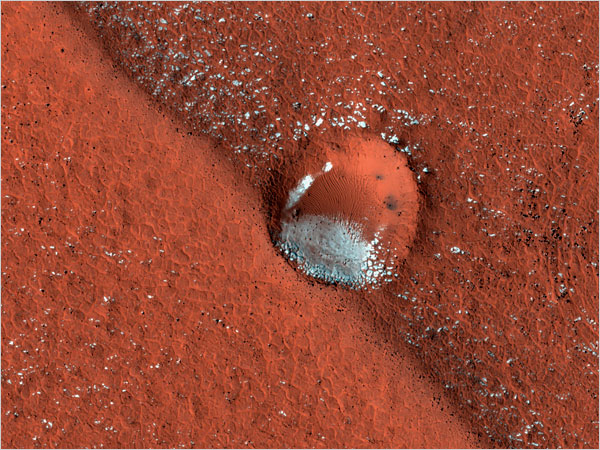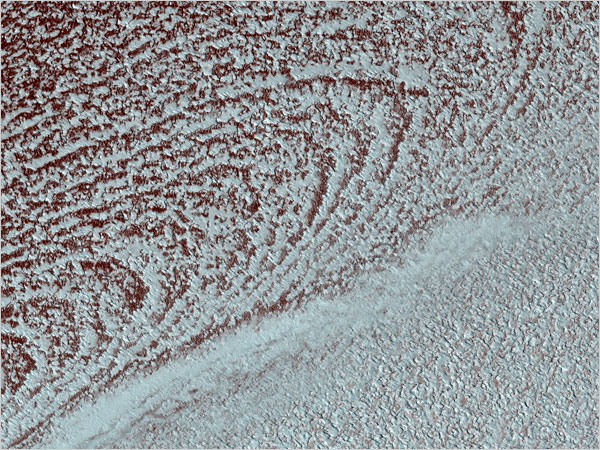This ridge(山脊), located in the far north of Mars, may have been created by an ancient glacier. The plains to the left have streaks that might have been created by wind blowing dirt around, while the plains to the right have a pitted texture probably created by the removal of ground ice. An impact crater(陨坑) is located in the center. Scientists hope they will be able to count how many new craters are presently being formed on the Martian surface.
In the polar regions, layered deposits(堆积物) like these in the north are thought to have formed by recent climate changes akin(类似的) to Earth's ice ages. The bright white areas are frost and the swirling patterns have been carved by erosion(腐蚀, 侵蚀).
On Mars, there is more than one type of ice; in addition to frozen water, there's also dry ice -- frozen carbon dioxide (二氧化碳)-- which shapes and reshapes the Martian landscape. From left: blocks of icy debris(岩屑), warmed by the sun, tumble down cliffs of the northern ice cap; swirling dust devils leave tracks on defrosting dune(沙丘) surfaces in the south; as polar ice recedes, the surface erodes in scalloped(圆齿状的) ridges; during spring in the north, sand dunes emerge from the blanket of frost; starburst patterns are created as ice warms into gas and expands, creating channels spreading out radially(放射状地); when the gas breaks through the ice, it creates plumes(地柱) and material is carried downwind.
Sometimes, the orbiter looked into space, too. It took this picture of Phobos(火卫一), the larger of Mars's two moons, from a distance of only 4,200 miles. In the lower right is Stickney, a crater 5.5 miles wide that is the largest feature on the moon.
The landscape within a crater located at the boundary of the southern highlands and northern lowlands contains much evidence of water, including the "shoreline" of a hypothesized ancient ocean. It also contains deposits of sediment(沉积物) left by flowing water and the crater is cut by gullies.
A portion of the inner wall of the 60-mile Columbus Crater, located in the southern hemisphere. Layered sedimentary rocks(水成岩) have been seen in the crater wall, deposited by wind or water. The spectrometer(分光计,光谱仪) on Mars Reconnaissance Orbiter(火星勘测轨道飞行器) has identified hydrated minerals in the layers, providing more evidence of past water.







